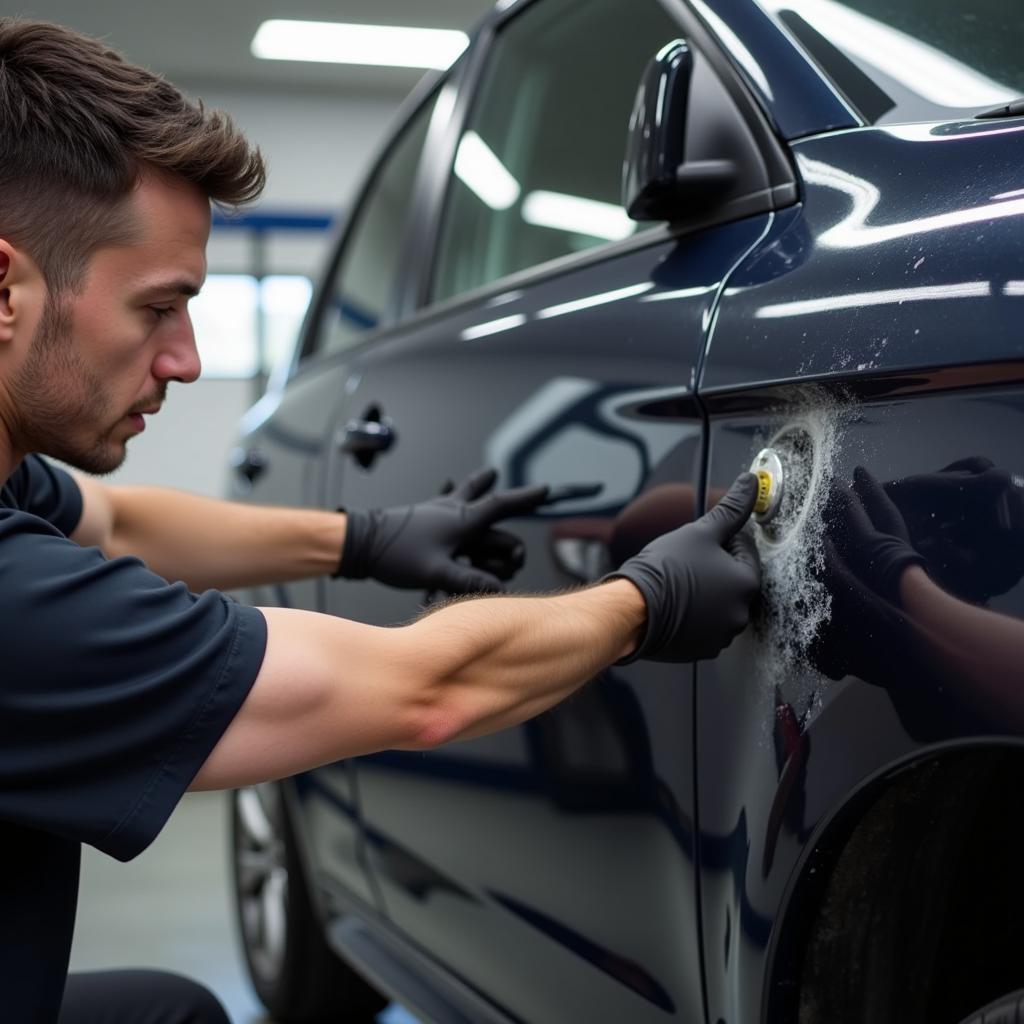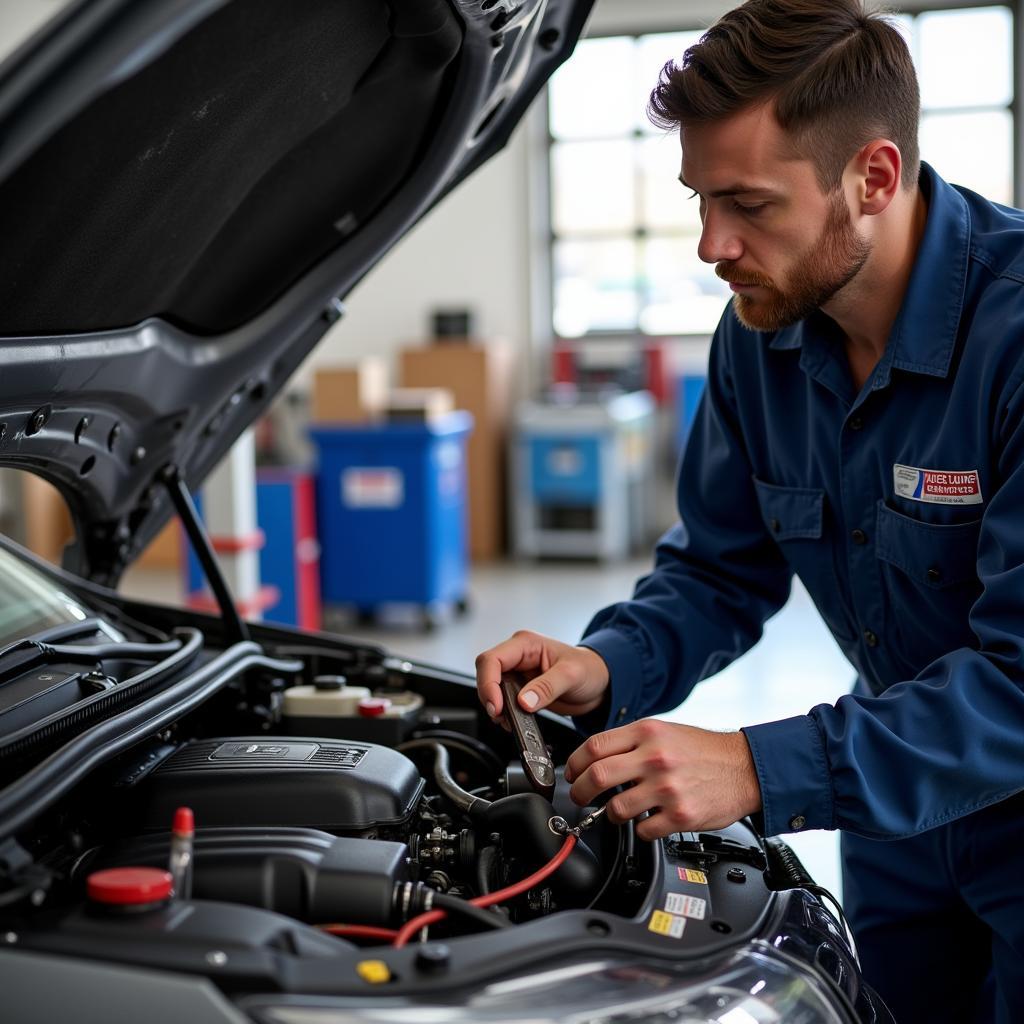Fixing a large dent in your car can seem daunting, but with the right approach, you can often address the issue yourself or find a cost-effective professional solution. This guide provides a comprehensive overview of how to fix a large dent in your car, from DIY techniques to professional repair options.
Knowing how to approach a large dent repair can save you time and money. Minor dents might be tackled with DIY methods, while more significant damage often requires professional intervention. This article will equip you with the knowledge to make informed decisions about your car’s repair. For fixing smaller dents, you might find the guide on how to fix a large dent in your car helpful.
Assessing the Dent: Size, Location, and Depth
The first step is to thoroughly assess the dent. Consider its size, location, and depth. A small, shallow dent on a flat panel might be amenable to DIY methods like paintless dent repair (PDR). Deeper dents, especially those on curved panels or involving creases, likely require more extensive bodywork.
Is the dent accessible from behind? Access to the backside of the dent can greatly simplify the repair process, allowing you to apply pressure and “pop” it out.
 Assessing car dent size, location, and depth
Assessing car dent size, location, and depth
DIY Dent Repair Options: For the Hands-On Car Owner
For smaller, shallower dents, several DIY methods can be effective. These include:
- Suction Cup Dent Puller: This tool utilizes suction to pull the dent outward. It works best on smooth, shallow dents.
- Hot Glue and Dowel Rod Method: This involves gluing dowel rods to the dent and pulling them out, drawing the dent with them.
- Hair Dryer and Compressed Air: This method uses heat from a hairdryer to expand the metal and then quickly cools it with compressed air, sometimes popping the dent out.
These methods can be effective for minor dents, but they require patience and careful execution. For fixing dents on a car door specifically, refer to our guide on how to fix a large dent in a car door. Remember, improper technique can worsen the damage.
Professional Dent Repair: When Expertise is Needed
For larger, deeper dents, or those involving paint damage, professional repair is usually necessary. Professional options include:
- Paintless Dent Repair (PDR): A skilled technician uses specialized tools to massage the dent out from behind the panel without affecting the paint. This is often the preferred method for dents without paint damage.
- Traditional Bodywork: This involves filling the dent with body filler, sanding it down, and repainting the affected area. This is necessary for deeper dents or those with paint damage.
“For significant dents, especially those impacting structural integrity, always consult a qualified auto body professional. Attempting DIY repairs on complex damage can lead to further problems,” advises John Smith, Senior Automotive Technician at Smith Auto Repair.
 Professional paintless dent repair process
Professional paintless dent repair process
Cost Considerations: Balancing Budget and Quality
The cost of dent repair varies widely depending on the size, location, and severity of the dent, as well as the chosen repair method. DIY methods are generally the cheapest, but they are only suitable for minor dents. PDR is typically more expensive than DIY, but less so than traditional bodywork. Traditional bodywork can be costly, especially if significant painting is required. If you are dealing with surface rust, you might find our article on cost to fix surface rust on car useful.
“Choosing the right repair method involves balancing cost and quality. While DIY methods are budget-friendly, professional repairs ensure a high-quality, lasting result,” says Jane Doe, Lead Auto Body Specialist at Doe’s Auto Body Shop.
Conclusion: Making Informed Decisions for Your Car
Fixing a large dent in your car requires careful consideration of the dent’s characteristics and available repair options. Whether you choose a DIY method or opt for professional repair, understanding the process empowers you to make informed decisions that best suit your needs and budget. Remember to always assess the damage thoroughly before attempting any repairs. For any further assistance or professional advice, don’t hesitate to connect with us at AutoTipPro. You can reach us at +1 (641) 206-8880 or visit our office at 500 N St Mary’s St, San Antonio, TX 78205, United States. We also have a helpful guide on fix broken plastic plug on car if you’re facing that issue.






Leave a Reply